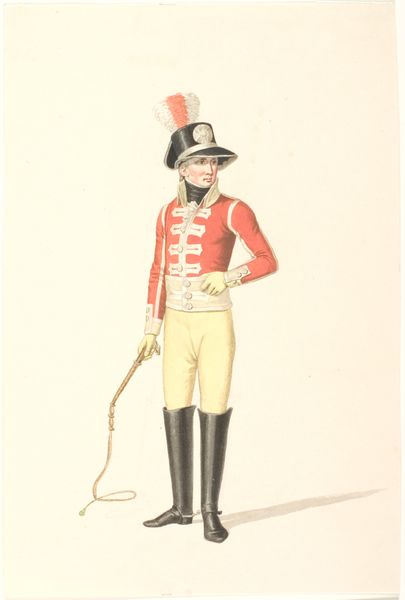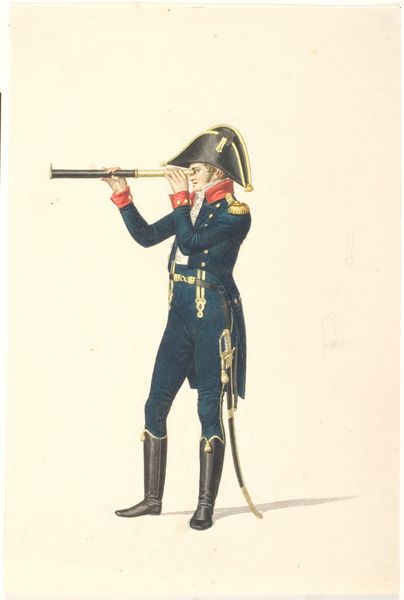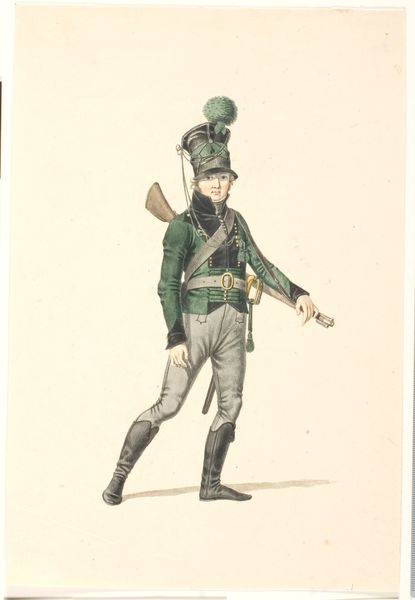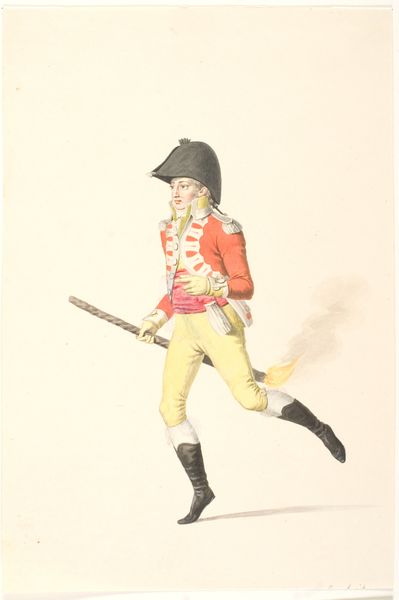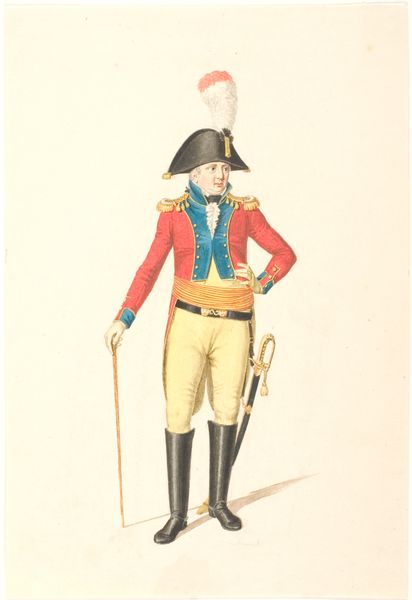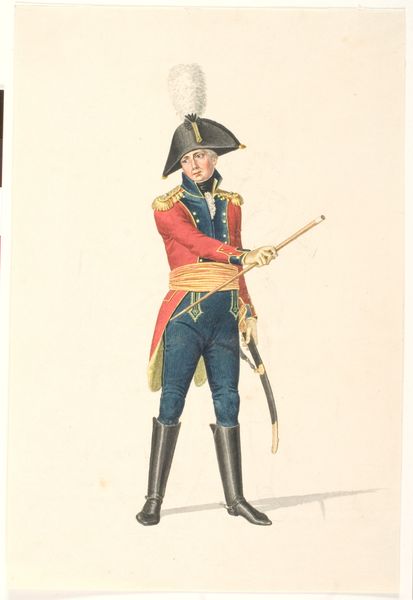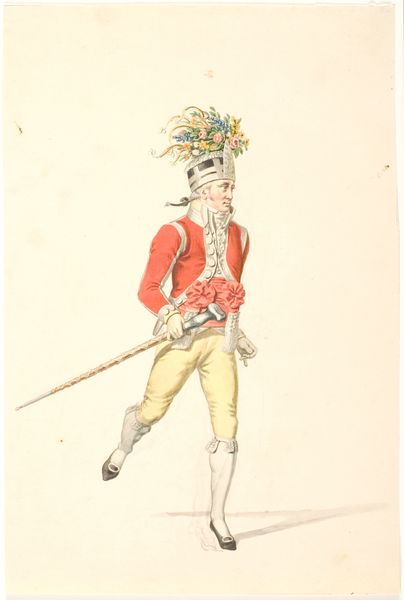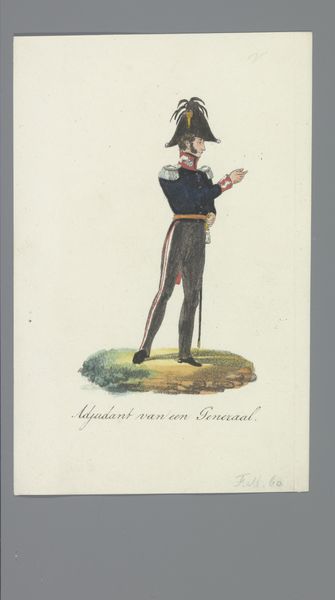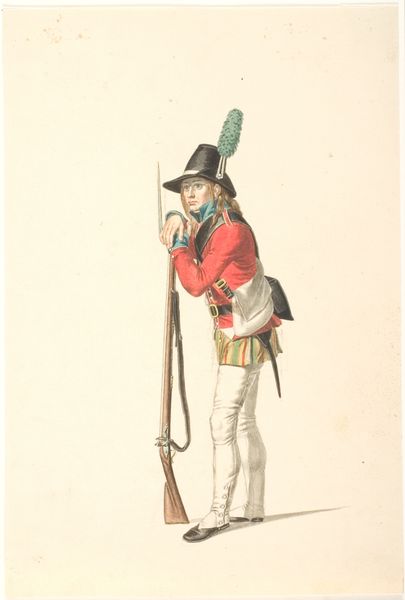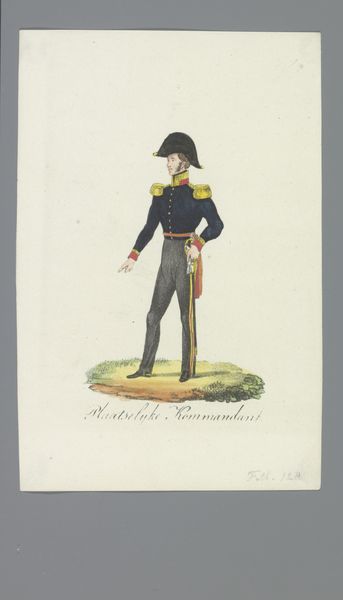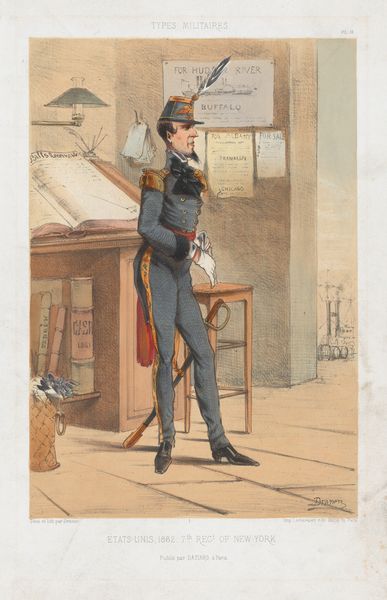
drawing, watercolor
#
portrait
#
drawing
#
watercolor
#
romanticism
#
portrait drawing
#
watercolour illustration
#
history-painting
Dimensions: 268 mm (height) x 179 mm (width) (bladmaal)
Editor: Here we have Johannes Senn's watercolor drawing, "Student," created in 1807. He seems quite composed, doesn’t he? Almost self-consciously stoic in his uniform. I’m curious, how do you interpret this piece in its historical context? Curator: That stoicism is a deliberate posture. Consider the socio-political context of 1807. This was during the Napoleonic Wars. Senn, though Swiss, would have been very aware of the changing power structures and the rise of nationalistic sentiment across Europe. The "student" here is not just an individual, but a symbol. Editor: A symbol of what, exactly? Readiness for war? Curator: Precisely. He embodies a romanticized view of duty and sacrifice, particularly in defense of the state. Think of Jacques-Louis David's paintings of Roman soldiers; there's a similar emphasis on discipline and virtue tied to military service. And remember who commissions and consumes such imagery: it's often the state or wealthy elite who wish to promote such ideas. Notice the subtle detail of the polished weapon, the carefully rendered uniform, these are not accidental. They speak to idealized military preparedness and social control. Editor: So it’s not necessarily about accurately depicting a soldier, but promoting a certain idea about military service. Curator: Exactly! The artistic choices actively contribute to building an ideology. This watercolour is displayed here in the SMK and not the national armory museum - the difference reveals how museums, themselves, are sites for the social interpretation of cultural history. Where does Senn seem to place his allegiance - is he truly documenting warfare, or, constructing propaganda? Editor: That gives me a lot to consider. I’d never thought about museums themselves participating in this historical interpretation. Thank you! Curator: My pleasure. Art history isn't just about what was painted but about why, how, and by whom, especially within the institutions that preserve and display it.
Comments
No comments
Be the first to comment and join the conversation on the ultimate creative platform.
